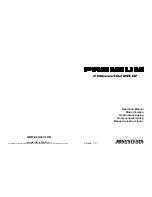
6
172-65203MA-02 (A-BD2) 21 Apr 2010
Operation
Principle of Air and Condensate Discharge
1. Start-up: Discharge of Initial Air and Cold Condensate
At start-up, the bimetal air vent ring is cold and has therefore contracted, causing it to
ride up to the narrower area under the disc, thus lifting the disc off the seat and
holding the valve open. This allows for the rapid discharge of initial air and cold
condensate.
2. Steam Enters, Valve Closes
As the bimetal air vent ring is heated by the entering steam, it expands and slips back
down, freeing the disc. The rapid flow of steam creates a low-pressure region under
the disc, which suctions it onto the seat. The pressure chamber above the disc
becomes a high pressure region when entering steam is compressed. This difference
in the pressures above and below the disc gives the closed valve a tight seal.
3. Condensate Discharge
When condensate enters the trap, the temperature in the pressure chamber drops,
causing the steam to condense and the pressure to drop. The inlet pressure then
pushes up the disc, opening the valve and allowing condensate to discharge. The
bimetal air vent ring remains in its expanded, low position state. When steam again
enters the trap, the valve closes, as in step 2, while allowing no steam to escape.
Cold Condensate
Air
Pressure
Steam
Condensate

































